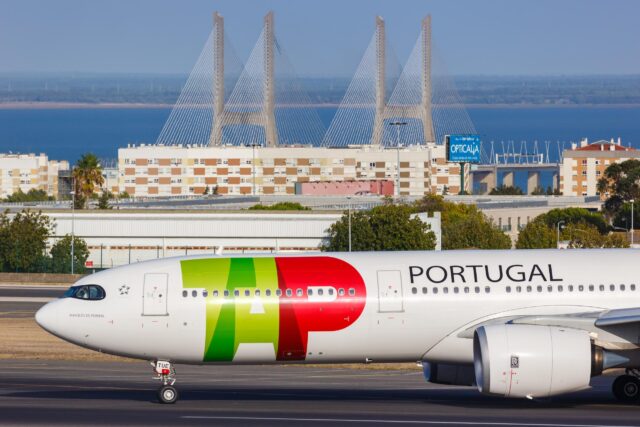The airships promising a ‘new era’ for cargo delivery
In a bold leap towards revolutionising the global logistics landscape, aircraft manufacturers have proposed a number of cargo airships as a solution to the challenges of transporting goods across vast…

In a bold leap towards revolutionising the global logistics landscape, aircraft manufacturers have proposed a number of cargo airships as a solution to the challenges of transporting goods across vast distances.
Combining cutting-edge technology with the timeless principles of buoyancy, these modern machines have the potential to redefine freight transport.
As the world grapples with environmental concerns and the need for more efficient delivery methods, cargo airships have emerged as a beacon of innovation, offering the potential to navigate remote and inaccessible regions while minimising carbon footprints.
In this article, we delve into recent cargo airship designs, exploring their features, advantages, and the transformative impact they could have on industries ranging from shipping to disaster relief.
Hybrid Air Vehicles
Hybrid Air Vehicles (HAV) is producing its pioneering new low carbon aircraft, Airlander 10, which can carry 10 tonnes of freight.
Key to HAV’s pitch are the eco-credentials of the Airlander aircraft, which will deliver up to 75 per cent reduction in emissions over comparable aircraft.
HAV is developing electric motors with the goal to deliver a hybrid-electric Airlander 10 from 2025. This will provide a 90 per cent reduction in emissions.
In time, all four of Airlander 10’s engines will be electric, giving future customers the option for a zero-emissions aircraft, in service by 2030.
ATLANT
ATLANT cargo airship is an innovative transportation technology, which the company hopes will open a “new era” in air delivery.
It is based on the unmanned hybrid cargo airship – ATLANT, capable of carrying up to 165 tones to a distance of 2,000 km.
The airship is able to land vertically on almost any unprepared surface with no need for special infrastructure, and can withstand different weather conditions in flight as well as on ground.
Lockheed Martin
Lockheed Martin has previously worked on an airship designed to carry cargo.
The LMH-1 airship would have had a 21-ton cargo payload and the ability to land on any surface. The project has been removed from the Lockheed Martin website and it is not clear whether development will re-continue.
In 2017, Paris-based Hybrid Air Freighters (HAF) signed a letter of intent to purchase up to 12 of Lockheed Martin’s Hybrid Airships, at a total value of approximately $500 million.
“We are keen to implement such an impressive innovation in the logistics market,” said Hubert de Contenson, chief executive officer of HAF. “The LMH-1 will open a new era for remote cargo delivery that is free from costly ground infrastructure and will provide a sustainable and affordable solution to remote cargo operations around the globe.”
“With a 21-ton cargo payload and the ability to land on any surface, the LMH-1 Hybrid Airship is designed to revolutionize remote cargo delivery,” said Rob Binns, chief executive officer of Hybrid Enterprises. “We are honored to have HAF as the latest customer of our game-changing aircraft.”
Aerosmena
Russian airship manufacturer Aerosmena has previously drawn up designs for a lenticular-shaped 600 tonne payload airship.
The aircraft was designed to perform transport and logistics tasks regardless of ground infrastructure with no need for ports, roads, waterways, airports, airfields, railways, hangars or runways.
Aerosmena previously said the “flying saucer” design would make the airship easier to manoeuvre and landing in a crosswind than other airship projects which use a more traditional elongated hull shape.
The Airship Initiative Design Bureau Aerosmena (AIDBA) develops large payload transport airships. AIDBA is headed by the experienced Russian aircraft designer Orfey Kozlov.
The concept of the Aerosmena airship is based on the principle of thermal ballasting and advanced steering and piloting system. The designers of the AIDBA operate with aerodynamic characteristics lenticular airship which was created from the results of wind tunnel studies and standard systems of mathematical modelling.
The CL AirShip CargoLifter
Based on proven and certified components of the AirTruck product range, CargoLifter’s proposed AirShip would be suited to carrying over-sized loads of more than 60m and payloads of more than 80 tons, with a flexible load bay for lifting industrial components.
The CargoLifter AirShip will be optimised for long distances up to 10,000 km, carrying any kind of cargo and components in its extremely large and flexible load bay.
CargoLifter says it is aiming to develop the CL 160 “flying crane” as an extended version with a special load frame.
“This will be the top of a wide product range, starting from small to large and for short to long distance – as an ideal solution for each market segment,” the company said.
Subscribe to the FINN weekly newsletter
You may also be interested in
Aerosmena’s “UFO” shaped airship aiming for 2024 launch
IATA: Air cargo contraction eases in June
Etihad Cargo implements AI-powered solutions to transform airfreight operations
















